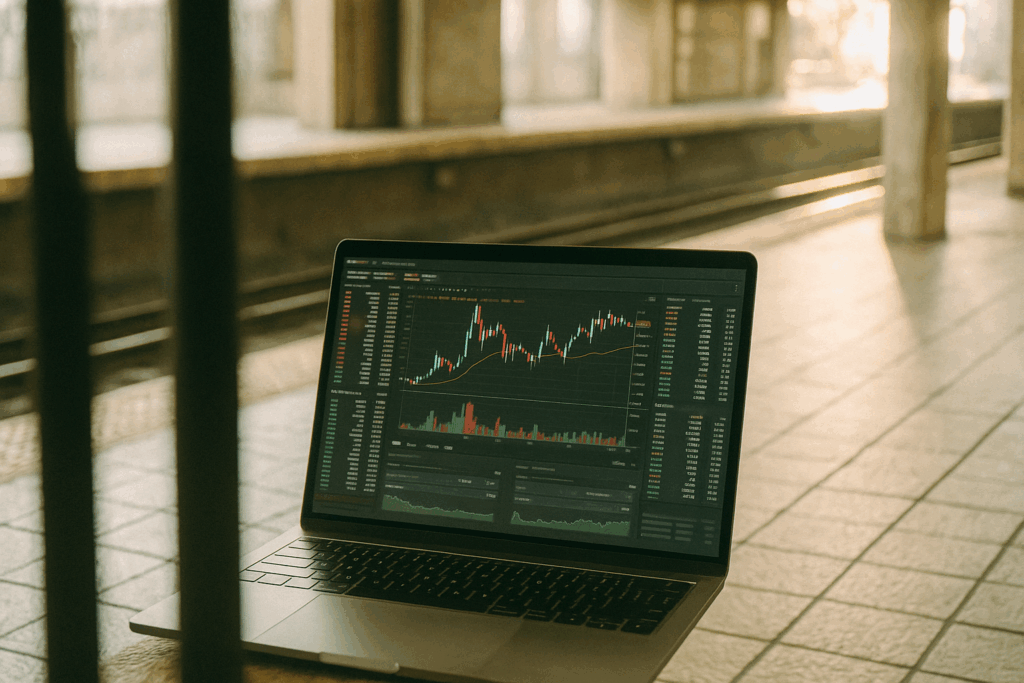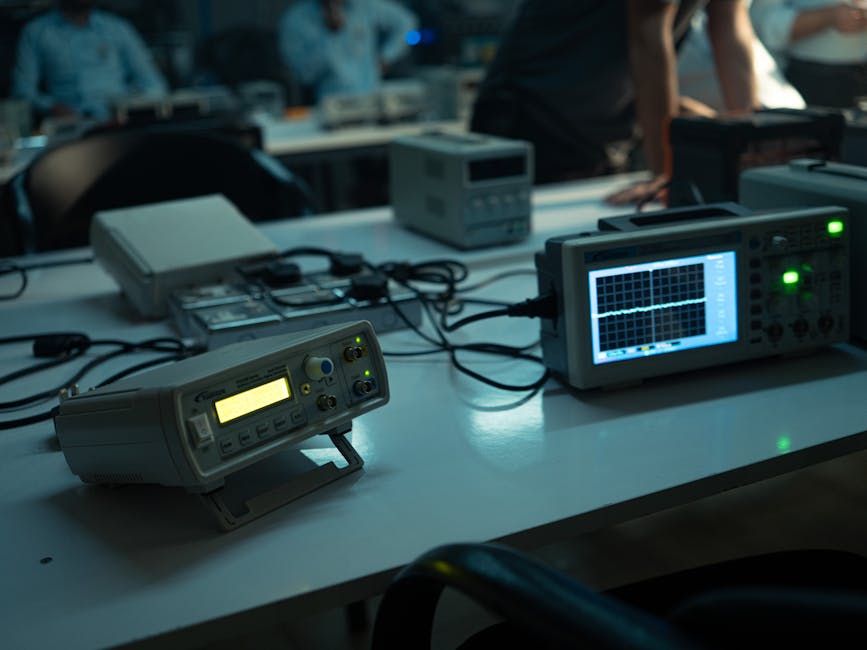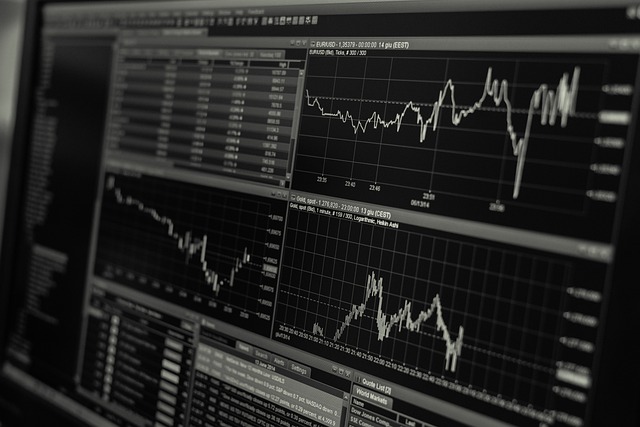Why the Right Tools Matter
If you’re trading crypto without tools, you’re not trading. You’re gambling. The market moves fast—faster than most can track manually. That’s why tools aren’t optional anymore; they’re the baseline. Professional traders rely on them to work with speed, dial in precision, and manage risk without emotion getting in the way.
Want to spot a bull flag before the masses? Need to manage ten trades across five exchanges? Looking to set stop-losses that don’t blow up your balance? Tools help with all that. They strip out guesswork and anchor your decisions in data, not gut feelings.
Pro traders don’t win because they’re lucky. They win because they build systems. They automate what can be automated, plan what can’t, and review everything. A clean setup—platforms, trackers, bots, alerts—isn’t just efficient. It’s how they survive and scale in the most volatile market in the world.
Tool #1: Crypto Exchanges with Advanced Features
Not All Exchanges Are Created Equal
Choosing the right exchange is your first real trading decision—and arguably one of the most important. While most platforms let you buy and sell crypto, only a few offer the depth, speed, and features that serious traders need.
Must-Have Exchange Features
When evaluating crypto exchanges, focus on these core attributes:
- Low Trading Fees: High fees eat into profits quickly, especially if you’re an active trader.
- Deep Liquidity: You want fast order execution with minimal slippage.
- Strong Security: Look for exchanges with strong track records, cold storage, and multi-factor authentication.
Popular Choices for Active Traders
Here’s how three top exchanges stack up:
- Binance: Known for low fees, high liquidity, and a wide selection of coins. Ideal for active or high-frequency traders.
- Coinbase Pro: A user-friendly yet robust platform with strong compliance and security. Great for transitioning from beginner to intermediate.
- Kraken: Offers excellent security and advanced trading tools, including futures and margin trading.
Match Your Exchange to Your Strategy
Not every trader needs everything. Make your choice based on what suits your trading goals:
- Day Traders need fast execution, advanced order types, and high liquidity.
- Long-Term Holders (HODLers) may prioritize security, regulatory compliance, and ease of storage.
The best exchange is the one that aligns with your trading style—not necessarily the one with the flashiest interface.
Tool #2: Charting Platforms
If you’re trading without reading charts, you’re flying blind. Market moves aren’t random—they leave footprints. And those footprints? They’re on the charts. Support zones, resistance levels, volume trends—they’re signs telling you what the crowd’s thinking. Learn to read them or risk getting fleeced.
Good charting platforms don’t just show you green and red candles. They offer multiple indicators (like RSI, MACD, moving averages), custom timeframes (1-minute scalping or weekly swings), and alert systems that ping you when something shifts. These are the basics. If your platform can’t do this, it’s not built for serious trading.
Tools like TradingView and Coinigy have become go-to options for pros and disciplined amateurs alike. TradingView, in particular, has a deep toolbox—even on the free tier. You can track dozens of indicators, compare assets, or test strategies. Coinigy adds multi-exchange connectivity, which is handy if you’re running positions across different platforms.
Bonus tip: setting up a chart for support and resistance is simple but powerful. Switch to a 4H or daily view. Look for price zones where the market reversed direction multiple times. Drag horizontal lines across those areas. Congrats—you’ve just marked the levels other traders are watching, too.
Still finding charts intimidating? Start with a crash course: Technical Analysis for Beginners. Master that, then come back with sharper instincts.
Tool #3: Portfolio Trackers
Keeping track of your assets across multiple exchanges and wallets can quickly become overwhelming. That’s where portfolio trackers come in—they give crypto traders a streamlined view of their holdings, performance, and allocation in real time.
Why Portfolio Accuracy Matters
During periods of high volatility, knowing your exact portfolio value and exposure can be the difference between making smart decisions or reacting emotionally. Manual tracking is prone to errors—especially when you’re dealing with dozens of coins, DeFi assets, and multiple wallets.
- Volatile markets demand precision
- Manual spreadsheets are outdated and error-prone
- Real-time tracking helps you respond quickly to market swings
Top Portfolio Tracker Options
Here are a few of the most reliable and feature-rich platforms available to traders:
- CoinStats – One of the most popular choices for syncing with wallets and exchanges. Offers portfolio analytics, news, and DeFi support.
- Delta – Sleek and user-friendly with clean visualizations and customizable features. Ideal for mobile-first traders.
- CoinMarketCap Tracker – A free feature within the broader CMC platform. Great for beginners or as a secondary tracker.
Sync Everything in One Place
The best portfolio trackers support multi-wallet and multi-exchange syncing. This means:
- Automatic API connections to exchanges like Binance, Coinbase, and Kraken
- Wallet integrations including MetaMask, Trust Wallet, and Ledger
- Consolidated view of all holdings and performance metrics
Staying organized isn’t a luxury—it’s a necessity. A strong tracker helps you make informed decisions, stay compliant during tax season, and maintain control in every market condition.
Tool #4: News Aggregators + Research Hubs
The phrase “buy the rumor, sell the news” gets thrown around a lot in crypto circles—but it’s useless if you’re the last to hear the rumor. Timing is survival. When major headlines move markets in minutes, you need tools that feed you the right information faster than the rest of the pack.
That’s where real-time aggregators like CryptoPanic, CoinDesk, and Messari come in. They don’t just dump news at your feet—they filter it, categorize it, and surface signals that matter. Whether it’s a token listing, regulatory update, or a whale movement on-chain, these platforms catch the early sparks before the crowd sees the flames.
But signal still needs separation from noise. Not every post on a news feed is actionable. Vet your sources quickly by checking timestamps, cross-referencing across platforms, and tracing a headline back to the original announcement. When in doubt, look for confirmation from trusted analysts or on-chain verifiable data. Your goal isn’t to catch everything—it’s to catch what matters, before it hits the masses.
Tool #5: Risk Management Calculators & Bots
Before you hit that buy button, know your numbers. Trading without defined stop-loss and take-profit levels is like skydiving without checking your parachute. You might land okay, but odds aren’t great. Smart traders map the exit before they enter—minimizing damage, locking in gains.
Position sizing calculators and volatility tools help you decide how much to commit to a trade, and how much you’re actually risking. It’s about survival, not just returns. These tools help take emotion out of the equation when your coin suddenly drops 12% in an hour. You’ll know your line in the sand.
Now let’s talk bots. Platforms like 3Commas and Cryptohopper make automation accessible—even for non-coders. From simple DCA (dollar cost averaging) setups to complex trailing stop strategies, bots can handle what you’d mess up manually. But don’t get lazy. A bot follows your rules—if your rules suck, the bot will just fail faster.
Bottom line? Tools are only as good as your discipline. No calculator or algorithm can replace experience and a clear plan. Set rules, test them, and stick to them. Execution wins here, not guesswork.
Final Thoughts
Trading tools exist to sharpen your edge. That’s it. They don’t promise profits—they give you leverage if you know how to use them. The difference between a trader who survives the chaos and one who burns out? Focus. Pick a handful of tools that match your style and go deep. Learn them inside out. A cluttered arsenal just slows you down.
This space moves fast. New platforms, bots, trackers—they pop up every week. Don’t fall for the trap of stacking tools just because they’re new. Shiny doesn’t mean smart. What matters is how well your tools support your process—entry, risk, execution, tracking.
Real success still comes down to this: a clear head, a solid strategy, and tools that fit your approach. Right tools, right mindset. That formula hasn’t changed—and it won’t.

 Founder & Editor-in-Chief
Founder & Editor-in-Chief
